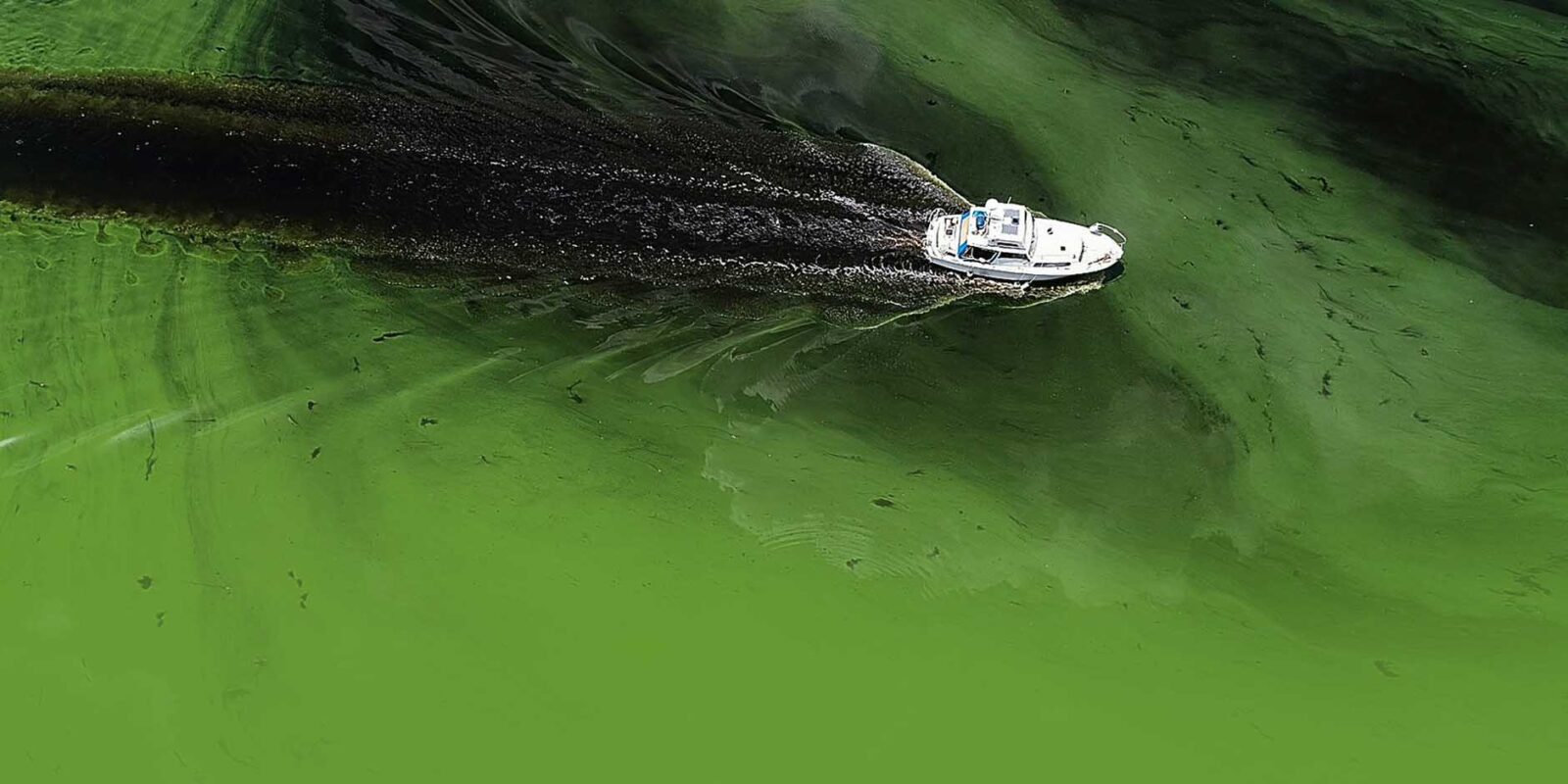Key points
- Algae are a natural and important part of any lake ecosystem;
- Stagnant water, high temperatures, and excessive nutrients stimulate blue-green algae growth;
- Controlling algae blooms has become a pressing global challenge;
- Current treatment options include ultrasound, chemicals, aeration, and mixing.
How can we prevent algal blooms? A question that is often raised. Algae are present in all water bodies naturally. They are an important part of any lake ecosystem. In any water body, the algae concentration can affect the entire ecological balance. Algae blooms occurring in lakes and reservoirs disrupt the natural balance and degrades water quality. Additionally, algae that grow rapidly and in excess end up suffocating other aquatic organisms.
The water turns green, tastes moldy, smells bad, and can be dangerous for consumption. Eventually, this triggers freshwater deficiency, massive death of fish and other aquatic life. Restoring the balance of an ecosystem requires monitoring and control of algal growth.
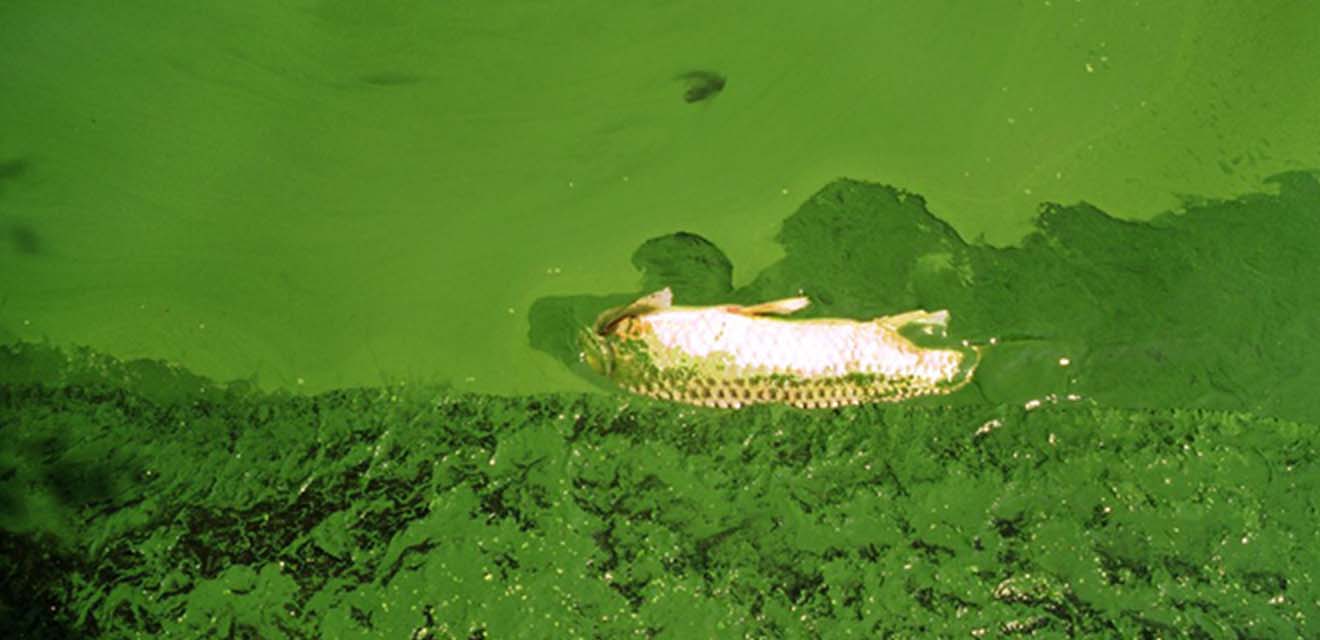
This article provides an overview of the main challenges and benefits of common algae control methods.
What causes algae blooms?
Stagnant water, high temperatures, and excessive nutrients stimulate blue-green algae growth. In summer, when the water warms up, algae can grow and spread really fast. Water reservoirs often lack circulation, therefore the water is stagnant. Abundant nutrients, especially nitrogen and phosphorus, help algae over-compete other water organisms, forming massive blooms.
Types of algae
- Planktonic, single-celled, microscopic algae. They can float in water freely or form colonies. They can turn water green, yellow, brown or red;
- Filamentous algae, single-celled algae forming long hair like mats;
- Macrophytes, resemble real plants, appearing to have stems and leaves.
Preventing nutrient contamination in water doesn’t completely solve the issue. Growth, decay, gravity, and eutrophication will continue the internal phosphorus cycle in ponds, lakes, and other bodies of water. Plus, human activities such as agriculture accelerate eutrophication. This, in turn, further releases nutrients stored in the sediment. Concerningly, this can lead to irreversible, long-term damage in the ecosystem.
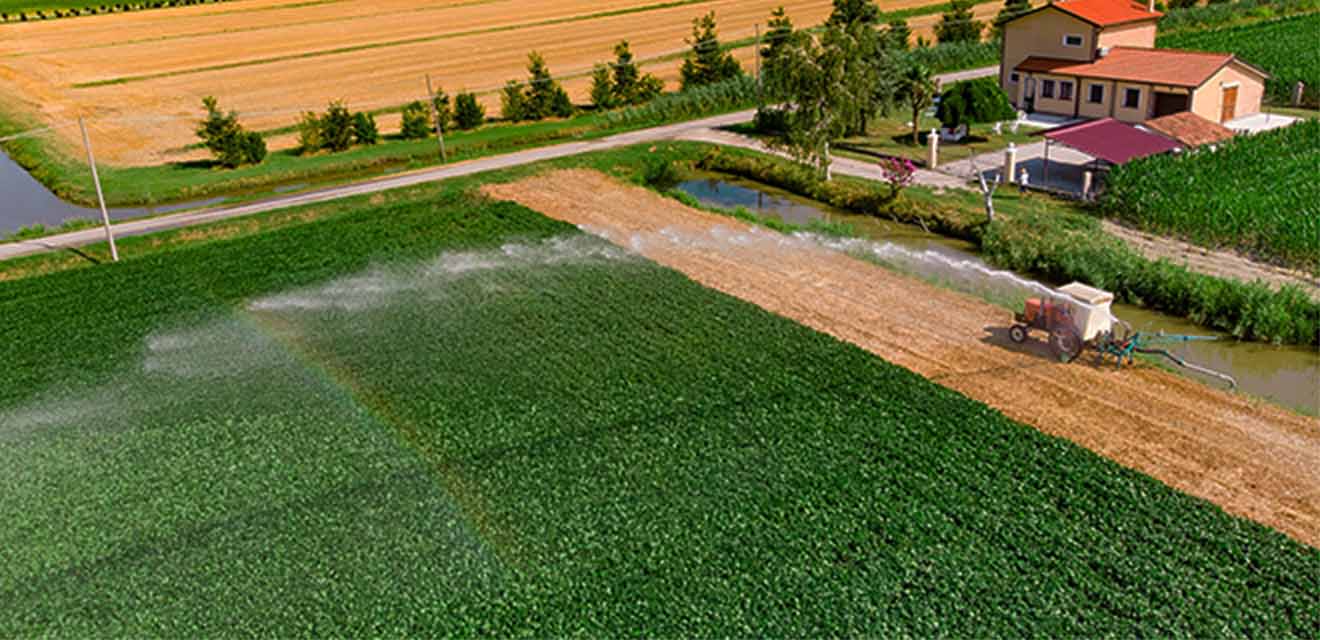
How to prevent algal blooms
To prevent algal blooms and serious environmental, health, and health impacts, you must predict and control the proliferation of algae. Sustainable algae management practices aim to reduce the inflow of nutrients in water bodies. Long-term success requires changes in policies and human activities. Therefore, it can take several years to significantly improve water quality.
Real-time water quality monitoring helps prevent algae problems. Monitoring key parameters—chlorophyll-a, phycocyanin, temperature, DO, pH, and turbidity allows you to see trends and forecast harmful blooms.
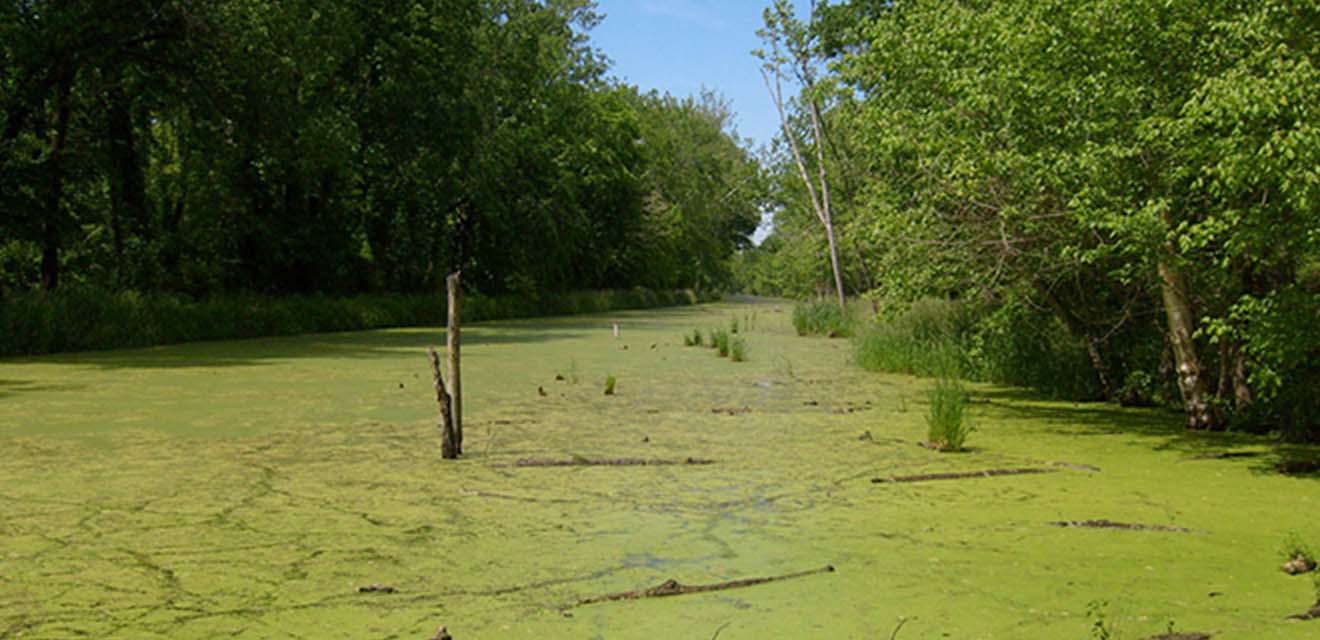
Dangers of algal blooms
Excessive cyanobacteria and green algae in water bodies can deteriorate water quality. These organisms can releases potent toxins that often lead to massive fish and animal die-offs.
They can also impact humans, causing illness, paralysis, liver cancer, or even death. Contaminated water can endanger the entire water supply, as these toxins and metabolites dissolve in water, escaping the conventional treatment.
Solutions for algae blooms
Controlling the spread of cyanobacteria has become a pressing global challenge. Especially for lakes/reservoirs and larger ponds. Common methods to prevent algal blooms include aeration, chemical/biological additives, or ultrasonic technology. Although there are plenty of treatment solutions on the market, they all have their cons. For example, algaecides offer quick results but damage the entire water ecosystem. Other methods, such as aeration, are quite expensive.
Ultrasonic algae control
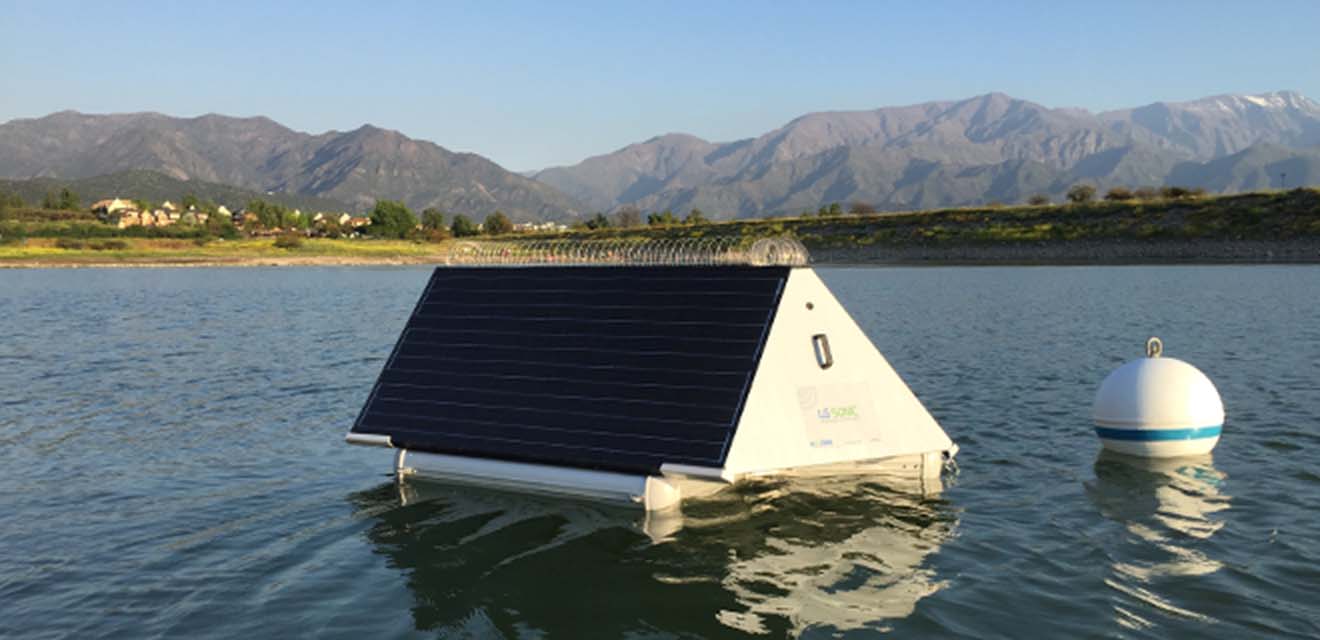
Ultrasound refers to sound waves with frequencies above 22 kHz. At specific frequencies, ultrasound can control algae growth (video). Cyanobacteria use gas vesicles for buoyancy and depth regulation. During the day, algae can be found in the top layer, where they perform photosynthesis. The carbon dioxide and dissolved nutrients help them produce oxygen and polysaccharides. At night, cyanobacterial cells empty their vacuoles and sink to the bottom where they use oxygen and nutrients to produce biomass.
Ultrasonic technologies create a sound layer in the upper water layer, affecting algae’s buoyancy. Algae cells drown all the way to the bottom where they are deprived of sunlight. Without light, they eventually die off and decompose with the help of bacteria. However, to guarantee that the ultrasonic treatment will be effective, it’s critical to use specific ultrasonic programs selected based on the current algae species and water characteristics. The reason for this is that algae can adapt to various treatments and weather conditions.
Advantages
Controlling algae with ultrasound is a well-known method that’s been used for decades. It’s a proven effective solution for green and blue-green algae species. Also, what make it truly great is that it’s environmentally friendly; it’s safe for the aquatic life and for the ecosystem. Plus, ultrasound can be used for small, as well as medium and large water bodies. Combined with real-time water quality monitoring, this method allows for accurate prediction and prevention of harmful blooms.
Disadvantages
Must cover the entire surface of the lake. Each spatial spot must be treated to achieve full efficiency.
Chemical control
Involves treating water with various chemical additives. Alum, lanthanum, or any other products that precipitate or sequester the ionized orthophosphates. Aquatic herbicides used to treat algae are called algaecides. They’re often copper-based compounds (e.g. copper sulfate, copper chelate communes, chemical Endothall).
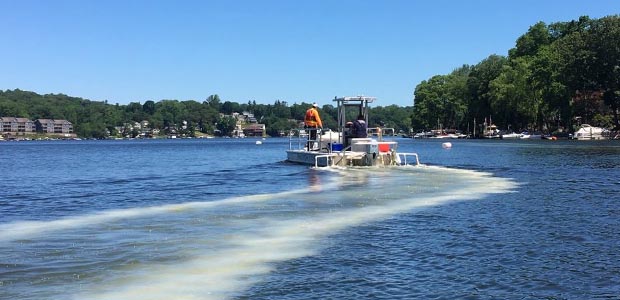
Advantages
Effective if the entire surface is treated.
Disadvantages
Algaecides are expensive and need frequent dosing. They must be used with care, as they can cause algal cell rupture. This triggers the release of toxins into the water. Rapid decay of harmful algal blooms can contaminate the water with algal toxins. This is dangerous for fish and plants. Algaecides can have significant long-term negative effects on a lake’s ecological balance. They aren’t suitable for large water surfaces.
Aeration
It’s crucial to maintain healthy levels of dissolved oxygen in a pond or any other water body. Oxygen helps break down decaying vegetation and other nutrients in water. Microorganisms help break down the silt at the bottom. Aerobic and anaerobic bacteria both contribute to decomposition.
Aerobic decomposition requires continuous oxygen supply. It intensifies when dissolved oxygen concentrations approach saturation levels. The primary result of aerobic bacteria decomposition is carbon dioxide. Anaerobic decomposition is slower. The end products are organic compounds like alcohols and foul-smelling organic acids.
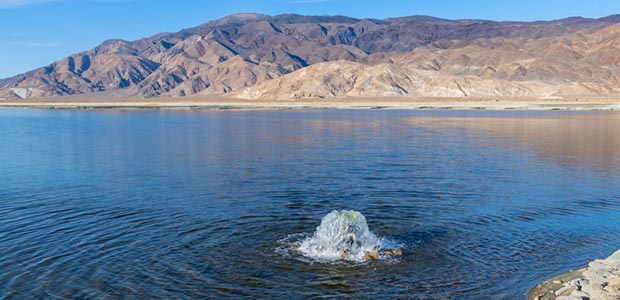
Advantages
Aeration is an environmentally-friendly technique that rejuvenates water bodies. It increases the oxygen level in water. Aeration systems can help avoid chemicals and create a healthy ecosystem. It can be used for large ponds.
Disadvantages
High costs for maintenance and labor, intense energy use. Aeration doesn’t directly kill the algae, therefore it’s not always efficient. It requires treating the entire water surface.
Mixing
Mixing circulates water to achieve destratification in reservoirs. The process involves mixing water to eliminate stratified layers. The Epilimnion and metalimnion layers are usually circulated to control the algae. The aim is to clear the surface water from iron, manganese, and anoxic odors that usually occur in the hypolimnion. This created less favorable conditions for algal growth in certain layers.
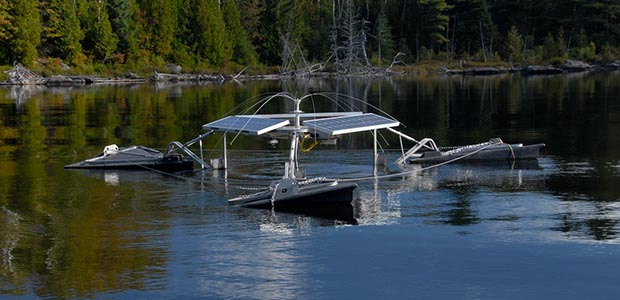
Advantages
Artificial circulation causes less environmental damage chemicals. It’s generally more effective in deep reservoirs (mean depth >15 m).
Disadvantages
Circulating water requires high system maintenance due to wear and tear. Such systems have fluctuating results on blooms. The effect on total cyanobacteria levels is controversial. In lakes, mixing often affects only surface layers close to destratifiers. In large systems, mixing sediments can actually increase the available nutrients. This triggers further algae growth in the short-term. However, in the long-term, algae reduction can be achieved.
